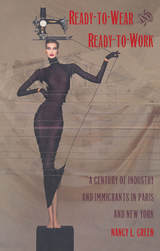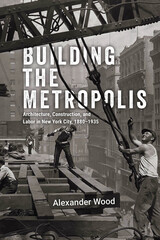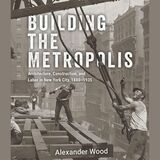2 books about Paris New York

Operatic Infrastructures
Materiality and Meaning in 1890s London, Paris, and New York
Flora Willson
University of Chicago Press
An exploration of the fundamental relationship between opera and urban modernity in three iconic cities: London, Paris, and New York.
At the end of the nineteenth century, London, Paris, and New York were quintessential modern metropolises and vital centers for opera. In Operatic Infrastructures, Flora Willson examines opera’s intimate entanglements with the material worlds of these cities to locate the physical roots of long-accepted ideas about the art form.
Reaching beyond histories of opera as spectacle, this book investigates the material underpinnings of opera’s existence at the century’s end: as an inter-urban, multimedia network. Operatic Infrastructures considers emergent technologies such as the telephone and the subway, but it also retrieves the hidden, forgotten, and otherwise effaced traces of systems such as storage facilities and colonial trade routes. It takes seriously the mundane aspects of materiality, from the blandest clichés of newspaper columns to the fine print of insurance certificates. In doing so, the book reveals just how far these interfaces with modern urban life reached into opera’s own systems of meaning-making and performance in the 1890s—making it impossible to demarcate neatly between “opera” and its so-called “context.” Without such operatic infrastructures, Willson shows, there would be no opera at all.
At the end of the nineteenth century, London, Paris, and New York were quintessential modern metropolises and vital centers for opera. In Operatic Infrastructures, Flora Willson examines opera’s intimate entanglements with the material worlds of these cities to locate the physical roots of long-accepted ideas about the art form.
Reaching beyond histories of opera as spectacle, this book investigates the material underpinnings of opera’s existence at the century’s end: as an inter-urban, multimedia network. Operatic Infrastructures considers emergent technologies such as the telephone and the subway, but it also retrieves the hidden, forgotten, and otherwise effaced traces of systems such as storage facilities and colonial trade routes. It takes seriously the mundane aspects of materiality, from the blandest clichés of newspaper columns to the fine print of insurance certificates. In doing so, the book reveals just how far these interfaces with modern urban life reached into opera’s own systems of meaning-making and performance in the 1890s—making it impossible to demarcate neatly between “opera” and its so-called “context.” Without such operatic infrastructures, Willson shows, there would be no opera at all.
[more]

Ready-to-Wear and Ready-to-Work
A Century of Industry and Immigrants in Paris and New York
Nancy L. Green
Duke University Press, 1997
Nancy L. Green offers a critical and lively look at New York’s Seventh Avenue and the Parisian Sentier in this first comparative study of the two historical centers of the women’s garment industry. Torn between mass production and "art," this industry is one of the few manufactauring sectors left in the service-centered cities of today. Ready-to-Wear and Ready-to-Work tells the story of urban growth, the politics of labor, and the relationships among the many immigrant groups who have come to work the sewing machines over the last century.
Green focuses on issues of fashion and fabrication as they involve both the production and consumption of clothing. Traditionally, much of the urban garment industry has been organized around small workshops and flexible homework, and Green emphasizes the effect this labor organization had on the men and mostly women who have sewn the garments. Whether considering the immigrant Jews, Italians, Puerto Ricans, Dominicans, and Chinese in New York or the Chinese-Cambodians, Turks, Armenians, and Russian, Polish, and Tunisian Jews in Paris, she outlines similarities of social experience in the shops and the unions, while allowing the voices of the workers, in all their diversity to be heard.
A provocative examination of gender and ethnicity, historical conflict and consensus, and notions of class and cultural difference, Ready-to-Wear and Ready-to-Work breaks new ground in the methodology of comparative history.
Green focuses on issues of fashion and fabrication as they involve both the production and consumption of clothing. Traditionally, much of the urban garment industry has been organized around small workshops and flexible homework, and Green emphasizes the effect this labor organization had on the men and mostly women who have sewn the garments. Whether considering the immigrant Jews, Italians, Puerto Ricans, Dominicans, and Chinese in New York or the Chinese-Cambodians, Turks, Armenians, and Russian, Polish, and Tunisian Jews in Paris, she outlines similarities of social experience in the shops and the unions, while allowing the voices of the workers, in all their diversity to be heard.
A provocative examination of gender and ethnicity, historical conflict and consensus, and notions of class and cultural difference, Ready-to-Wear and Ready-to-Work breaks new ground in the methodology of comparative history.
[more]
READERS
Browse our collection.
PUBLISHERS
See BiblioVault's publisher services.
STUDENT SERVICES
Files for college accessibility offices.
UChicago Accessibility Resources
home | accessibility | search | about | contact us
BiblioVault ® 2001 - 2025
The University of Chicago Press









